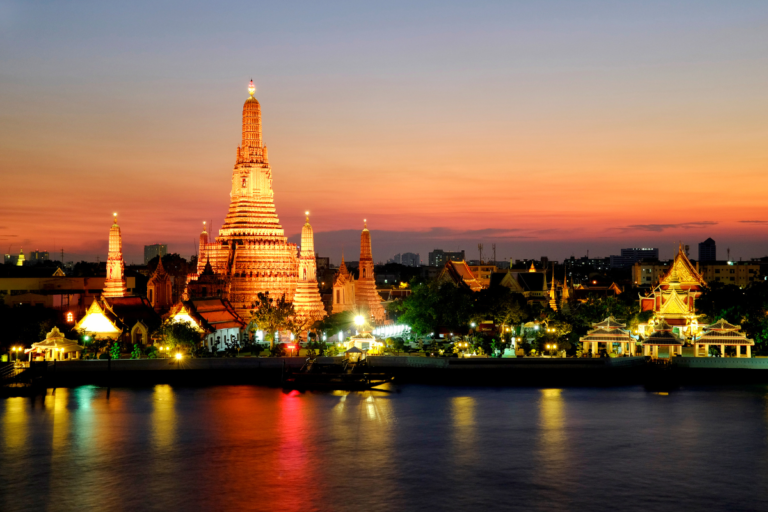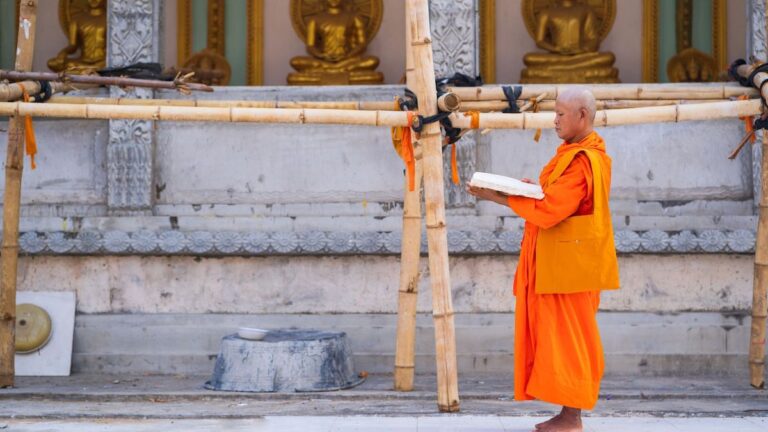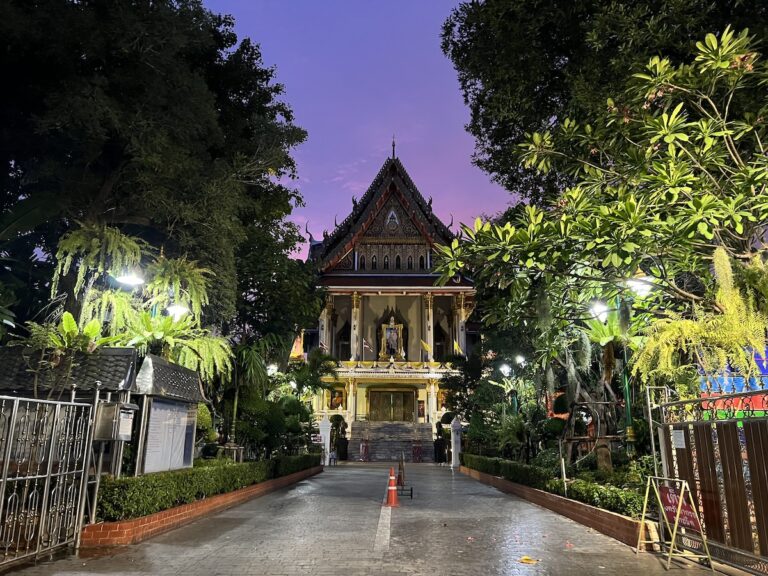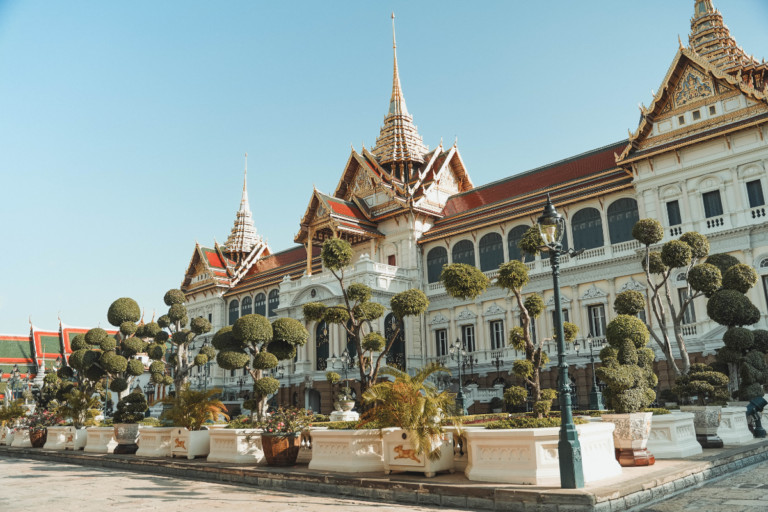Khmer Temples in Thailand
Thailand has a unique and impressive history, with its people taking great pride in the fact that their country has never been colonized by any European power. The only notable intrusions on Thai territory occurred centuries ago, with the expansion of the Khmer empire and a series of invasions by Burmese marauders.
As one of the most celebrated architectural wonders of Southeast Asia, the Khmer temples are now a testimony to the rich cultural heritage of Thailand. These ancient temples reflect the grandeur and religious beliefs of the Khmer Empire, which once ruled over Cambodia and parts of Thailand. The temples are an intrinsic part of the country’s history and attract a plethora of visitors from around the world. If you’re planning a trip to Thailand, make sure to add these Khmer temples to your itinerary and experience the captivating charm of Thai culture.
Khmer Empire Temples in Thailand
The Khmer Empire was at its strongest 900 years ago and its territories extended far beyond what is now the Kingdom of Cambodia. At its zenith, the Khmer Empire extended outwards from its capital at Angkor Wat right through the central regions of Thailand down to the Malay border and across southern Vietnam in the east.
The Khmer spent 500 years in Thailand and constructed a good number of magnificent temples in its eastern regions which survive in reasonable states of repair through to the present day. The most famous of these Thai Khmer temples are not in Thailand, however.
Preah Vihear
In 1962, the International Court of Justice ruled that the 11th-century Preah Vihear, which sits on the country’s eastern border with Cambodia, was actually in that country.
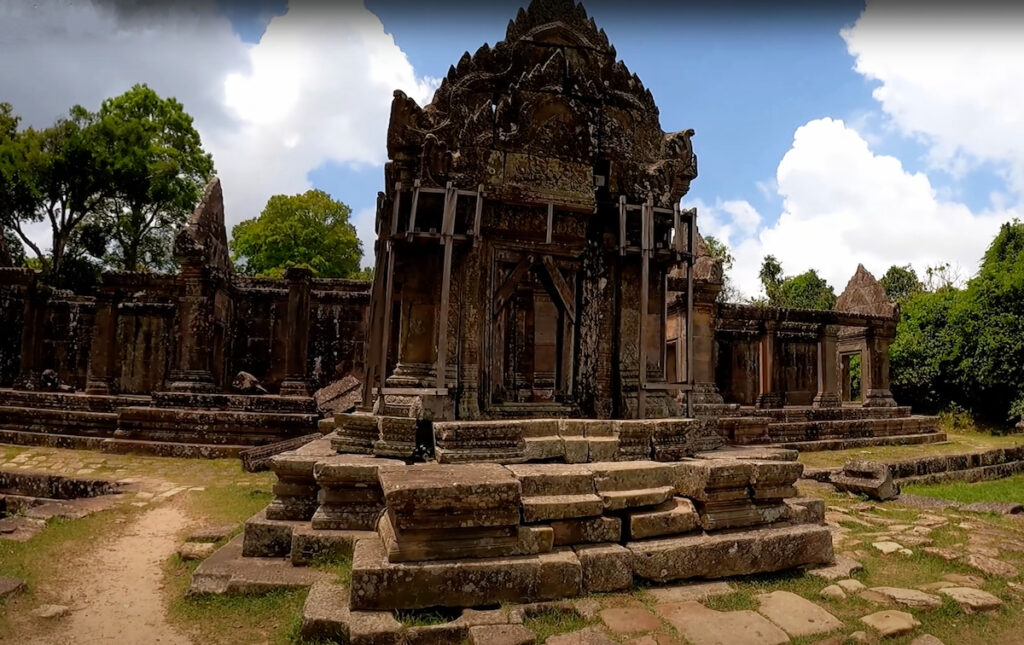 The easiest access route to Preah Vihear is via Sisaket Province’s district of Kantharalak. In recent years, Thai and Cambodian troops have become involved in a number of skirmishes and battles over Preah Vihear. This has led to the temple being periodically closed to tourists. Currently, the temple is open.
The easiest access route to Preah Vihear is via Sisaket Province’s district of Kantharalak. In recent years, Thai and Cambodian troops have become involved in a number of skirmishes and battles over Preah Vihear. This has led to the temple being periodically closed to tourists. Currently, the temple is open.
Preah Vihear sits atop a 525-meter-high cliff and is approached by a stairway that passes through five entry buildings (gopura). The temple complex itself is almost one kilometer in length and is packed with majestic arches and roofless chapels. The view over the surrounding plains from the temple is wonderful and worth the visit in its own right.
The views from the temple are truly breathtaking. To reach the temple, visitors must first stop at the ticket office located at the bottom of the mountain. A $10 entrance fee is required, and transportation up the mountain can also be arranged at the same location. For those who prefer not to hike up, a pickup car can be arranged for $25. It’s important to note that cash is the only accepted form of payment.
Phimai Historical Park
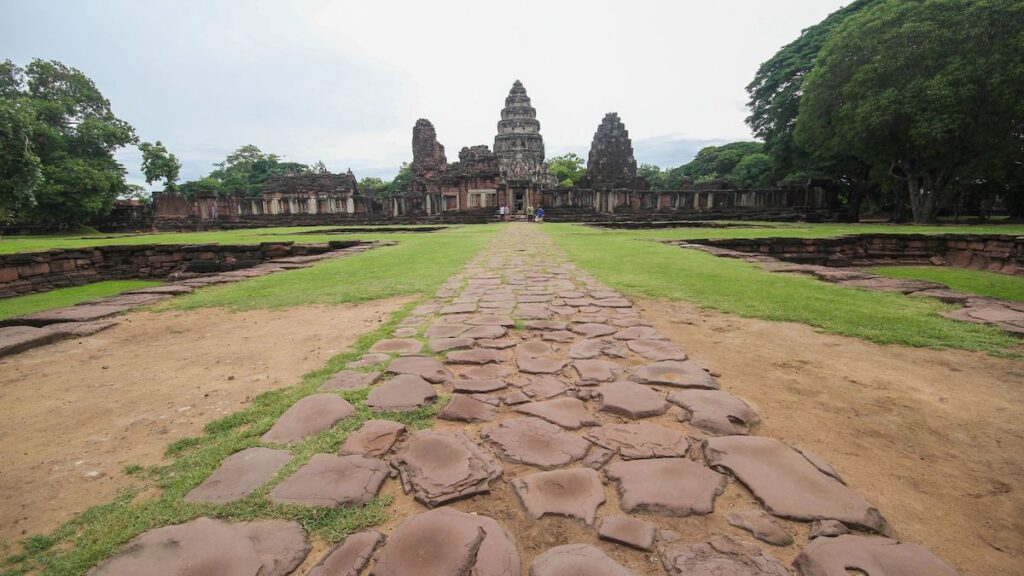 Prasat Phimai is probably Thailand’s second most important Khmer temple complex. This temple sits at the heart of a provincial town in Nakhon Ratchasima Province. It was constructed with Bayon and Angkor influences and sits at the northern end of the 220 km-long ancient Khmer Highway from Angkor Wat. Lofty architectural gems with lotus-shaped roofs, inscriptions, and statues are among the abundant remnants at Phi Mai.
Prasat Phimai is probably Thailand’s second most important Khmer temple complex. This temple sits at the heart of a provincial town in Nakhon Ratchasima Province. It was constructed with Bayon and Angkor influences and sits at the northern end of the 220 km-long ancient Khmer Highway from Angkor Wat. Lofty architectural gems with lotus-shaped roofs, inscriptions, and statues are among the abundant remnants at Phi Mai.
Many of the smaller relics unearthed at Phimai as well as other local Khmer temples are housed in the onsite museum. Prasat Muang Khaek, Prasat Non Ku, and Prasat Muang Kao are three of Nakhon Ratchasima’s other old Khmer temples that are within striking distance of each other and in varying states of repair. The latter is in the best condition as it was built out of hardier sandstone.
With its ornate structures and intricate carvings, the park has often been compared to the ancient Angkor Wat temple complex in Cambodia. Built in the 11th century, the park is steeped in history and has served as a significant religious and cultural center for centuries. A walk through the park reveals stunning examples of Khmer architecture, including the main temple, various shrines, and the impressive Naga bridge.
For a reasonable fee of just 100 THB per person, visitors can explore this impressive ancient complex. To help visitors gain even more insight into the site’s rich history, there are informative signs throughout the park in both Thai and English. These signs highlight the most important sights and provide context that enhances the overall experience.
Prasat Hin Phanom Rung
 Prasat Hin Phanom Rung is in the neighboring province of Buriram. This complex is also in an elevated location and sits on top of a 400-meter-high dormant volcano. Classic Khmer towers, portals, lintels, incredible-looking statues, and elegant stairways are in great condition providing some serious eye candy for history buffs. The main staircase spans 160 meters and is flanked by lotus bud-topped pillars.
Prasat Hin Phanom Rung is in the neighboring province of Buriram. This complex is also in an elevated location and sits on top of a 400-meter-high dormant volcano. Classic Khmer towers, portals, lintels, incredible-looking statues, and elegant stairways are in great condition providing some serious eye candy for history buffs. The main staircase spans 160 meters and is flanked by lotus bud-topped pillars.
Snake-festooned bridges give access to the main sanctuary at Phanom Rung. Entry vestibules lead into the main tower. Lintels and icons depicting figures from Hindu folklore are placed at the various entrances and porches. The structures have been restored, yet the Thai Fine Arts Department ensured that the materials and design perfectly matched the originals from a millennium ago.
This architectural marvel took 17 long years to restore. With the help of French experts, the Department of Fine Arts tirelessly worked to ensure that the complex was restored back to its original glory. The restoration process started in 1971 and only ended in 1988, a true testament to the patience and perseverance of all those involved. Today, the Prasat Hin Phanom Rung is considered one of Thailand’s most sacred sites, attracting thousands of visitors every year.
Prasat Muang Tum
 Nestled in the province of Buriram in Thailand is the stunning Prasat Hin Muang Tum. This architectural delight was built by the Khmer around the end of the 10th century. As is common with some of the larger Khmer-era temples, Muang Tum is built around a central sanctuary flanked by smaller ones. The temple’s towers are in short rows and have mostly been restored to their former glory. Ponds at Muang Tum are often filled with flowering lotuses.
Nestled in the province of Buriram in Thailand is the stunning Prasat Hin Muang Tum. This architectural delight was built by the Khmer around the end of the 10th century. As is common with some of the larger Khmer-era temples, Muang Tum is built around a central sanctuary flanked by smaller ones. The temple’s towers are in short rows and have mostly been restored to their former glory. Ponds at Muang Tum are often filled with flowering lotuses.
This historic temple is a testament to the impressive architecture and design of its Hindu builders. As with many Hindu temples, Muang Tam faces the east, welcoming the rising sun as a symbol of enlightenment and rebirth. The temple boasts an intriguing concentric plan, with a central sanctuary encircled by multiple enclosures featuring serene ponds and breezy courtyards. For those looking to immerse themselves in Thailand’s rich cultural heritage, visiting Prasat Hin Muang Tum is an absolute must.
Ta Muen Thom
Ta Muen Thom is one of the later Khmer edifices and is situated just inside Thailand’s border with Cambodia. Due to this proximity to the border, Ta Muen Thom is often closed when tensions between the two countries escalate. The temple has not been restored. Ornate friezes and window balusters are beautifully preserved. There were quite a few statues at the temple until Khmer Rouge rebels either smashed or sold them in the 1980s.
Prasat Muang Singh
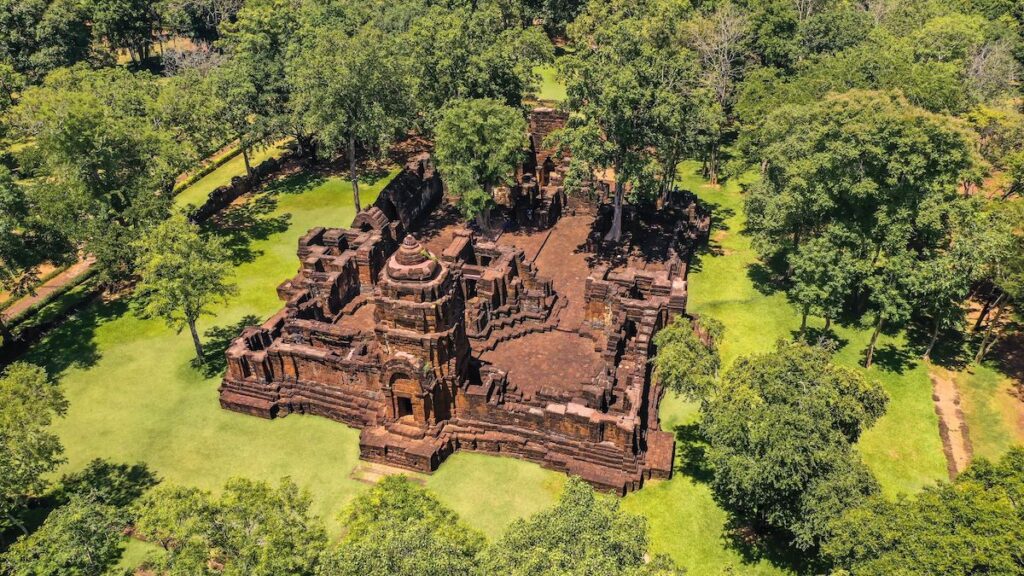 Prasat Muang Singh is believed to be the farthest west of Thailand’s major Khmer temples and is located in Kanchanaburi Province on the banks of the Kwae Noi River. Rectangular ramparts and moats surround a central cloistered section where a number of surreal statues stand sentry. There is a museum in the historical park Muang Singh that contains a fantastic collection of excavated relics and artifacts.
Prasat Muang Singh is believed to be the farthest west of Thailand’s major Khmer temples and is located in Kanchanaburi Province on the banks of the Kwae Noi River. Rectangular ramparts and moats surround a central cloistered section where a number of surreal statues stand sentry. There is a museum in the historical park Muang Singh that contains a fantastic collection of excavated relics and artifacts.
The above-mentioned temples are just the highlights of around 40 unique Khmer temples located within Thailand’s territory. Muang Singh is only 10 km from the town of Kanchanaburi and is easily accessible. With the exception of Phi Mai, the other Khmer temples are mostly in out-of-the-way locations. But they can be reached by public transport without too much effort as long as a taxi is involved at some point. By far, the best way to experience these sites is by renting a car.


